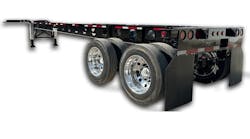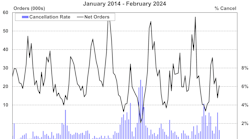Everything changed on June 29, 2007.
No, it was not the release of Ratatouille—a film about a rat named Remy who dreamed of becoming a renowned French chef—although that actually happened that day.
It was the day the first Apple iPhones went on sale in stores, culminating a frenzied period in which people camped out for days to get their hands on what the media dubbed the “Jesus Phone”—a device including a touch-screen with no keyboard, WiFi access, a camera, and the ability to browse the web.
Up until that day, all the data ever generated in history was estimated to have been five exabytes (5/1000 of a zettabyte). According to IBM, 2.5 exabytes of data was generated every day in 2012. But now, Google alone generates at least one exabyte every day, and there are estimates that humanity will generate almost 10,000 exabytes in 2016 alone.
In his presentation, “Big Data and the Internet of Everything,” Vigillo founder and CEO Steve Bryan took attendees through the massive transformation in information and data. Vigillo was founded the year the iPhone was released—2007—by a team of data scientists and software engineers specializing in the Big Data that flows from hundreds of sources within the commercial transportation and logistics industry.
“Big Data is not just about analytics and studying patterns, trends, or even prediction,” Bryan said. “It’s not just about connecting a lot of people and things together on the Internet.
“It’s about combining Big Data and the Internet to disrupt traditional business models and destroy inefficiency wherever it may be lurking. The new technologies abhor inefficiencies and will not tolerate them.
“Big Data is defined as a new generation of technologies and architectures designed to extract economic value from a very large volume of a wide variety of data by enabling high-velocity capture and analysis in search of the hidden truth—veracity.”
How fast is data growing? He gave these illustrations:
• 500 million Tweets are sent each day.
• More than four million hours of content are uploaded to Youtube every day.
• There are 3.6 billion Instagram “likes” each day.
• There are 4.3 billion Facebook messages posted daily.
• There are 5.75 billion Facebook “likes” every day.
Bryan said that in 1956, a five-megabyte IBM 350 hard drive weighed over 2000 pounds and could store the equivalent of one iPhone photo. Now everybody is carrying around a device in their pocket that stores hundreds of photos.
He said the Internet of Things will generate $14.4 billion of value over the next decade, and there will be 40 times more devices than people on the Internet in 2020. IDC estimates there will be 212 billion things globally by the end of 2020. Extreme Networks estimates that five billion people will have Internet access.
Consumer applications will drive the number of connected things, he said, while enterprise will account for most of the revenue. Gartner estimates that 13 billion connected things will be in use in the consumer sector by 2020.
What kinds of things will connect? Location Intelligence. “Location” relates to tagging and storing pieces of raw data with their specific location (and usually time as well). “Intelligence” relates to turning raw data into actionable insight using data analytics techniques: GPS; radio frequency identification (RFID) tags; weather; driver data; and vehicle performance.
Some RFID tags can be printed directly on products and packaging for 0.1 cents and replace ten trillion barcodes yearly with something far more versatile and reliable. In the next 10 years, the numbers sold globally will rise from 12 million in 2011 to 209 billion in 2021. Hewlett-Packard is working on a project it calls the “Central Nervous System for the Earth,” with the company planning to deploy a trillion RFID sensors all over the planet.
“A printable RFID on a newspaper or magazine will report back to the publisher in real time when it was purchased, where, when it was opened, what page it was opened to, what ads were on that page,” Bryan said. “It will turn marketing possibilities very close to being the equivalent of the online world. With a printable RFID, marketers and advertisers will soon have the ability to have intelligence communicated to them from the physical page of the magazines we read.”
As Bryan was saying that, an attendee in the audience interrupted and asked, “What if I don’t want all that information? What do we do as a consumer? What do we do as a country? What if I don’t want to be tracked?”
“Go off the grid, go to Alaska,” Bryan said. “But seriously, we don’t know the answer to that yet. The marketers, the gatherers, the Vigillos are out there ahead of this stuff, gobbling up this data, most of us in a way that we think is good for society and good for business. But there are some people who do this who don’t have business or our interests in mind.”
For example, Cesar Cerrudo, an Argentinian security researcher, claims to be able to control Manhattan traffic, and he says the same technique will work around the world.
And back in August, a group of University of Michigan researchers presented research showing that by sending digital signals within the internal network of a Class 8 tractor, researchers could change the readout of the tractor’s instrument panel, trigger unintended acceleration, or even disable one form of a semi-trailer’s brakes. They said that it was actually easier to do than with consumer cars because of a common communication standard in the internal networks of most industrial vehicles.
“Where would the money be in that?” said Peter Rowe, chief technology officer for Vigillo. “You could be mischievous and mess with a truck, but where would that get you? Trailers also are going to get much more sophisticated because of all this data. Well imagine that a truck pulls over, I’m a hacker, and I can just send a message to you that your truck stopped and it’s not starting: ‘Can you go here and pay this money?’ We look at it as there is a huge security component. Security is going to be a part of your conversation future. Talking about all this data coming at you, you will be asked this question: How is this secure?” ♦










